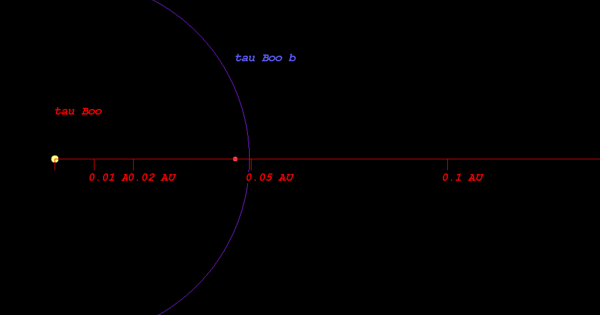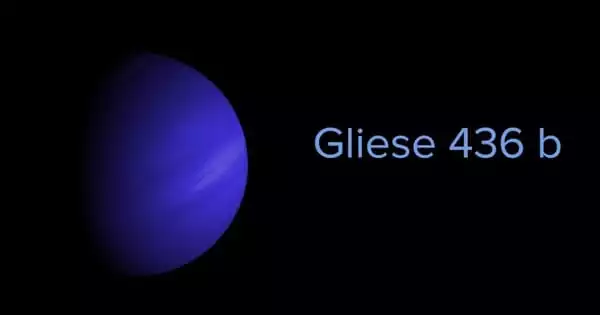Tau Boötis b is a gas giant exoplanet in the habitable zone of an F-type star. It’s an extrasolar planet located about 51 light-years away. It has a mass of 5.95 Jupiters, takes 3.3 days to complete one orbit around its star, and is 0.049 AU away from it. The planet and its host star were chosen by the International Astronomical Union as part of NameExoWorlds, a public process for assigning proper names to exoplanets and their host stars (where no proper name already exists). It was discovered in 1996 and announced.
Tau Bootis b made headlines again in 2012 when two independent research teams published findings about the planet’s atmosphere. Previously, learning about an exoplanet’s atmosphere was only possible if the planet passed directly in front of – or transited – its central star as seen from Earth.
Discovery
The planet was discovered in 1996 and is one of the first extrasolar planets discovered. Paul Butler and his team (San Francisco Planet Search Project) discovered it orbiting the star Tau Boo (HR 5185) using the highly successful radial velocity method. Because the star is visually bright and the planet is massive, it produces a very strong velocity signal of 469 ± 5 meters per second, which Michel Mayor and Didier Queloz quickly confirmed using data collected over 15 years. The AFOE Planet Search Team later confirmed it as well.

Orbit and mass
Tau Boötis b has a minimum mass that is more than four times that of Jupiter. It orbits the star in a “torch orbit,” at a distance from the star that is one-seventh that of Mercury’s distance from the Sun. One orbital revolution takes only 3 days and 7.5 hours. Boo is assumed to be hot because it is hotter and larger than the Sun, and the planet’s orbit is so small. The temperature would be close to 1600 K if the planet was perfectly grey, with no Greenhouse effect or tidal effects, and a Bond albedo of 0.1. Although no direct detection has been made, it is certain that the planet is a gas giant.
As Tau Boötis b is more massive than most known “hot Jupiters”, it was speculated that it was originally a brown dwarf, a failed star, which could have lost most of its atmosphere from the heat of its larger companion star. However, this seems very unlikely. Still, such a process has actually been detected on the famous transiting planet HD 209458 b.
Characteristics
Tau Boötis b’s temperature is likely to inflate its radius (1.2 times that of Jupiter). Because no reflected light was found, the planet’s albedo must be less than 0.37. By 2021, the albedo constraint was reduced to less than 0.12. At 1600 K, it is expected to be hotter than HD 209458 b (previously predicted 1392K) and possibly even HD 149026 b (like HD 179949 b) (predicted 1540 K from higher albedo 0.3, then actually measured at 2300 K). Tau Boötis b’s predicted Sudarsky class is V, resulting in a highly reflective albedo of 0.55.
Direct detection of water vapor in the planet’s atmosphere was announced in 2014. Later atmosphere characterization in 2021 resulted in measured carbon abundance similar to Jupiter, in the form of 0.35% carbon monoxide volume admixture to hydrogen-helium atmosphere.
Astronomers have now extracted information about the atmosphere of Tau Bootis b using sensitive equipment and 15 years of measurements of the planet’s faint reflected glow of light. Not only that, but they’ve measured the slight changes in wavelength of carbon monoxide spectral lines in the planet’s atmosphere as Tau Bootis b travels around its orbit to get a better estimate of the planet’s mass and orbital characteristics.
















